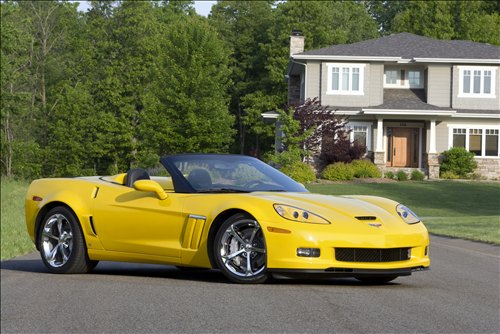Monday, November 30, 2009
Sunday, November 29, 2009
2010 Kia Cadenza Pictures



The new Kia Cadenza luxury sporty sedan The Cadenza is powered by a 3.5-litre V6 engine boasting 290hp and 338 Nm of torque
2010 Ford Fiesta S2000 Pictures


2010-The new Ford Fiesta S2000, M-Sport and Ford's first global rally car, which will be eligible to compete in national rally championships around the world as well as the IRC and S2000 World Cup, is due for homologation in January 2010. However, it will make its public debut this weekend appearing as course car at the final round of the IRC series, the Rally of Scotland.The Fiesta S2000 has already completed nearly 3,000 km of testing both in the UK and Europe and that extensive testing programme will continue into the start of the next year in readiness for the car's competitive debut.
AutoArt 1/24 Porsche 911 Cup cars-photo review
Photos of the new 1/24 AutoArt Porsche 911 GT3 Cup cars. See the cars for sale here on AutoArt's website, links below.
The white GT3 release car link.
The black GT3 VIP Racing car.
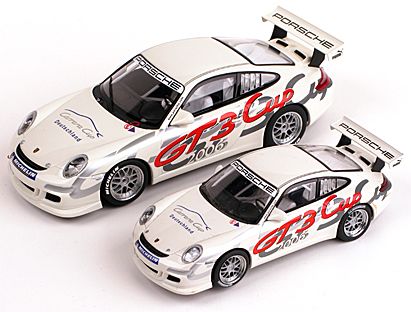
For comparison I've included this shot showing the AutoArt 1/32 Porsche with the 1/24 car.

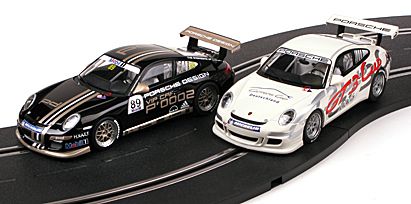
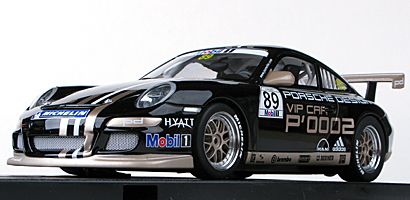

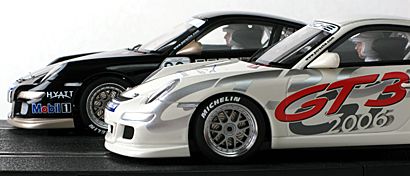
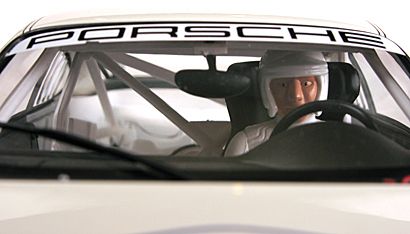
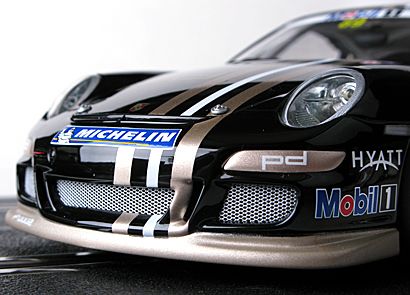
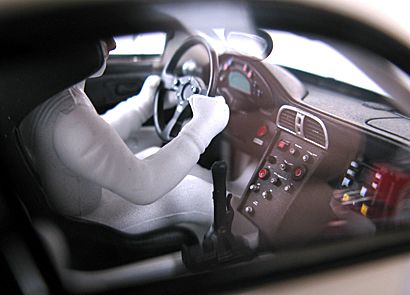
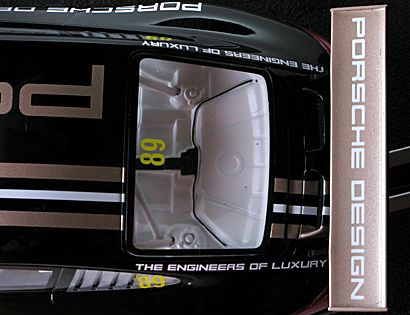
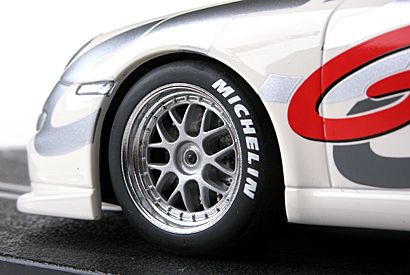
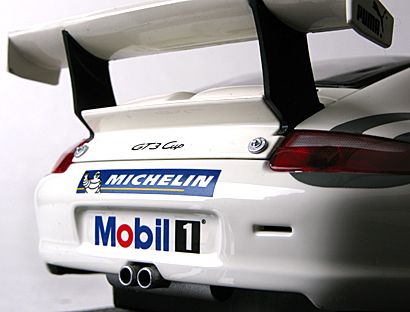
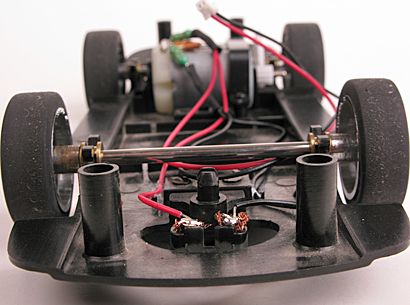
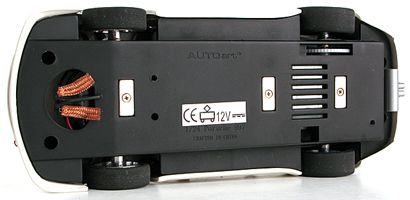
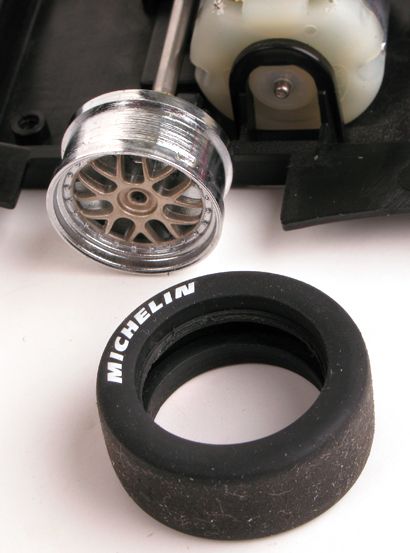

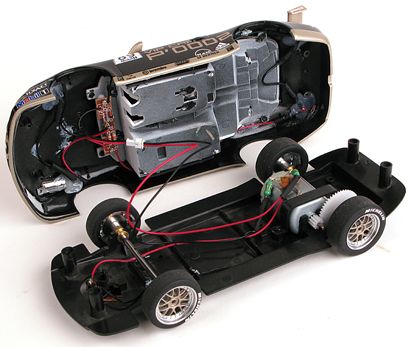
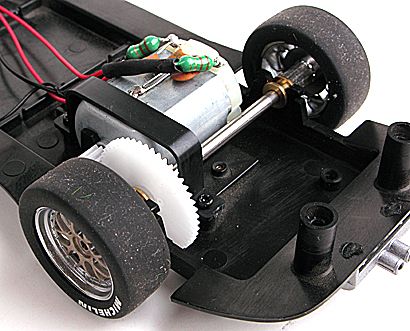
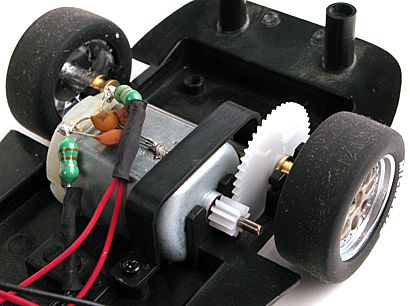
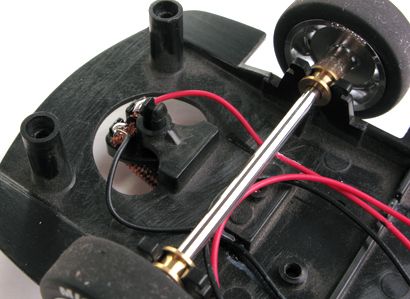
The white GT3 release car link.
The black GT3 VIP Racing car.

For comparison I've included this shot showing the AutoArt 1/32 Porsche with the 1/24 car.



















India electric car pioneer plans biggest plug-in car plant
 Chetan Maini, the engineer who pioneered India’s first electric car, had his eureka moment two decades ago when he drove a vehicle fuelled by solar power across the blazing Australian outback.
Chetan Maini, the engineer who pioneered India’s first electric car, had his eureka moment two decades ago when he drove a vehicle fuelled by solar power across the blazing Australian outback.Now Maini, the man behind Reva Electric Car Co., is building in southern India what he says will be the world’s biggest factory making battery-powered city commuter cars.
“It’s the first attempt at mass production of a green car,” said Maini, who studied hybrid electric technology at California’s Stanford University and developed the no-clutch, no-gears Reva as head of a 75-member engineering team.
“With growing climate change awareness, I think we’re at the tipping point for electric cars,” Maini told AFP in an interview.
The drive in 1990 which set Maini on his career track was a General Motors-sponsored solar-powered race in which his car finished third, beating many of the global car companies.
“Driving across the continent on the sun’s energy made me think how we could use alternative energy to power cars in the Indian context,” he said.
“When I saw how our cities were getting polluted, I realised employing clean, alternative energy could make a lot of sense — we needed to develop this kind of technology,” he said.
Maini has put some 3,000 of the zero-polluting three-door Revas on the roads in India and Britain — where it is known as the G-Wiz — in the eight years since the company started selling the cars.
Reva was formed in 1994 as a joint venture between the family-owned Maini Group and AEV of the United States to manufacture environment-friendly vehicles.
But it took seven years for the first Reva to go on sale as Maini and his team worked on the design.
Afterward, “we were in a test marketing phase, trying to see how people used electric cars, what were their needs. But that’s now over and we’re ready to move to the mass-market stage,” Maini said.
In September, Reva got a big endorsement when GM announced it would team up with the tiny car company to develop a plug-in version of the best-selling GM Spark mini-car as the US giant embraces electrically powered driving.
“We think their technology is the best,” said GM India president Karl Slym.
The Reva — named after Maini’s mother — can seat two adults and two children and cover 50 miles (80 kilometres) on a single charge of electricity. New models feature sleeker looks than the Reva, which resembles a modified golf-cart, and will offer greater distance.
The company’s next generation three-door, four-seater hatchback NXR is intended to be a family car and will go into production in 2010. It will have a top speed of 65 miles per hour and travel 100 miles on a single charge.
The car will go on sale for around 10,000 euros (15,000 dollars) and can be charged in 90 minutes.
The higher-end NXG will have a 125-mile range and an 80 mile per hour top speed and sell for 23,000 euros in Europe.
The price of the new vehicles is not fixed for India but the cars are expected to sell for “much less,” said Maini.
The Reva currently retails for around 350,000 rupees (7,500 dollars) and is built at a small factory outside the southern city of Bangalore.
Maini is targeting people who want a vehicle for city jaunts or as a second automobile.
The cost of running an electric car in India is a tenth of a petrol-fuelled car, Maini said. The car has no oil filters, spark plugs or radiators so maintenance costs are also low.
“Since we started, there’s been quite a big change in consumer mind-sets,” said Maini, whose love affair with cars began when he was a child assembling remote-controlled toy vehicles.
“We are also seeing a large policy shift by governments to environmentally friendly vehicles,” he added.
Maini is eyeing annual sales of “5,000 plus” for the next three years and then 30,000 annually from cars produced at his new Bangalore factory, which is being built with venture funding.
There is a large market as the infrastructure for electricity is widespread — even in India, he said.
“All you need is the installation of a standard plug point — 15 amps — that is used for an air conditioner or an iron. Most people only need a larger car if they are going out of town.”
The tie-up with GM is part of a three-pronged strategy for Reva which wants to make its own cars under the Reva brand, franchise production in countries such as the United States and license the company’s technology for use by global companies.
GM and Reva have promised the new electrically powered Spark mini-car will be on Indian roads in a year and they see a market later abroad.
Cambodia: ‘Telepathic’ Car Symbolises Auto Industry
 The gold-coloured convertible turns heads on impoverished Cambodia’s roads — not least because of creator Nhean Phaloek’s outlandish claim that it can be operated telepathically.
The gold-coloured convertible turns heads on impoverished Cambodia’s roads — not least because of creator Nhean Phaloek’s outlandish claim that it can be operated telepathically.“I just snap my fingers and the car’s door will open. Or I just think of opening the car’s door, and the door opens immediately,” says the 51-year-old as he proudly shows off the homemade car, named the Angkor 333-2010.
Onlookers gasp as he demonstrates the trick, and with the fibre-glass vehicle having cost him $5,000 and 19 months of labour he is in no mood to reveal the remote control system behind it.
But as with a handful of other Cambodians who make their own curious cars, he dreams the two-seater will help foster an automobile industry in the country, still poor after decades of conflict.
“I am very excited and proud of this car because many people admire me and keep asking me about how I can make it,” he says, adding that it reaches speeds of up to 100 kilometres (62 miles) per hour. Kong Pharith, a 48-year-old former maths and physics teacher who has also produced his own car, says an auto industry is about to blossom in Cambodia.
“Our works will be part of a motivating force for the next generation to access new inventions and show the world that Cambodia has an ability to do what you think we cannot,” he says.
The inventor, who first came to national attention in 2005 for building a solar-powered bicycle, thinks he has now hit on a truly unique product with his orange, jeep-like vehicle with solar panels on its roof. Kong Pharith says it took him four months to design and put the final polish on his “tribrid” car which operates on solar energy, electricity and gasoline, hitting speeds of up to 40 kilometres per hour with its 2,000 watt motor.
“I’m really happy about my achievement but not very satisfied with it yet,” he says, adding that Cambodia’s lack of modern technology and materials are a minor obstacle to efficient manufacturing. The dream of building cars in Cambodia may not be far-fetched. Officials have announced plans for South Korean automaker Hyundai to open a plant in southwestern Cambodia, assembling some 3,000 vehicles per year.
Cambodia did actually assemble cars in a factory during the 1960s, before the country was caught in the maelstrom of the Vietnam War.
The Angkor 333-2010 is the third he has built, and his first to talk. When Phaloek slams the door a voice out of the dashboard moans: “Why do you close me too strongly?”
“Dozens of local and foreign guests have come and seen my car,” Nhean Phaloek says with a smile. “One British man told me that it is the Cambodian James Bond car.”
2010 Maybach Zeppelin the realm of high-end luxury cars
2010 Maybach Zeppelin
Mercedes is bringing the 2010 Maybach Zeppelin to Geneva Motor Show in March. Maybach first used the Zeppelin name in the 1930s, when dirigible’s name symbolized modern luxury. Now the name’s resurrection will be used to get more in touch with old-world elegance. From the outside, the luxury brand’s new top-of-the-range model can be recognised by its two-tone special paint finish - a mix of “Rocky Mountains” light brown and “Taiga” black, but customers can choose whatever they want. Other features include unique 20-inch wheels, special “California” beige leather upholstery, and a set of silver champagne flutes.
The streamlined exterior mirrors, which produce even less wind noise, are new to Maybach. They have a more angular design and are separated from the door frame by a slender arm, giving them a more expressive look. They also feature an enlarged mirror surface together with integral indicators in the shape of a horizontal “V” for even greater perceptual safety.

2010 Maybach Zeppelin
The curving “ZEPPELIN” lettering that appears below the distinctive double “M” emblem on the radiator grille and on the boot lid instantly gives away the elite status of the new Maybach Zeppelin.
The 6.0-liter biturbo V12 has also been upgraded 28 hp to now make 640 hp and 738 lb-ft of torque. All this extra luxury does of course come at a price: €406,000 for the Maybach 57 Zeppelin and €473,200 for the Maybach 62 Zeppelin. At today’s rates, that’s about $524,000 and $610,000 respectively. While the price alone will ensure exclusivity, Mercedes says the Zeppelin edition will be limited to 100 units.
A Maybach brochure dating from 1930 clearly sets out the firm’s stall: “To create only the very best from the very best – a car that fulfils every last wish and stands out for its supremely refined elegance and power.” At that time, Karl Maybach had developed a luxury car, the likes of which had never been seen before. Maybach derived the design of its mighty twelve-cylinder drive unit from the same engine he had developed to power the daring airships of aviation pioneer Ferdinand Graf von Zeppelin. Inspired by the Count’s visionary personality, he christened Germany’s first ever series-production twelve-cylinder car “Zeppelin”, and offered it to a highly discerning (and solvent) clientele with a displacement of either seven or eight litres (150 hp or 200 hp).

2010 Maybach Zeppelin
Even today, the name “Zeppelin” has an incomparable ring to it in the realm of high-end luxury cars. As the flagship model in today’s range of Maybach Saloons, the new Maybach Zeppelin does justice to its branding. The name is not merely intended to rekindle memories, after all: as in bygone times, Maybach is once again building the Maybach Zeppelin for distinguished drivers who are seeking something extra special, even in this most luxurious of automotive segments. Not only do the Maybach 57 Zeppelin and Maybach 62 Zeppelin stand out for their exquisite elegance, inventive ideas and phenomenal performance.
Press release
The Maybach brand is bringing out the new Maybach Zeppelin to spearhead its luxury saloon model range. The new model, which is receiving its premiere at the Geneva Motor Show, represents the absolute zenith in the high-end luxury saloon segment. This makes it a worthy successor to the legendary Maybach Zeppelin, which was revered worldwide as the ultimate in high-class automotive engineering in the 1930s. The hallmark features of the new Maybach flagship’s unique sense of style include a stunning paint finish, featuring a shoulderline in a contrasting colour, as well as the exquisite, meticulously crafted materials in the interior, whose long list of optional extras includes a world first – a highly sophisticated perfume atomiser. The new model’s performance even outclasses the rest of the Maybach range, making it the most powerful Maybach ever. In a nutshell: the Maybach Zeppelin epitomises stylish elegance and the art of vehicle manufacture at its most refined as no car has ever done before. The new Maybach Zeppelin is being built in a limited edition of just 100 worldwide.
Even today, the name “Zeppelin” has an incomparable ring to it in the realm of high-end luxury cars. As in bygone times, Maybach is once again building the Maybach Zeppelin for drivers who are seeking something extra special, even in this most luxurious of automotive segments. Not only do the Maybach 57 Zeppelin and Maybach 62 Zeppelin stand out for their exquisite elegance, inventive ideas and phenomenal performance, only one hundred of these special model versions of the high-end luxury saloons will be made worldwide.
Even greater power for the Maybach Zeppelin
The Maybach 57 S and the long-wheelbase version, the 62 S, serve as the technical basis for the new range-topping model. Supreme performance is assured in both cases by the 6.0 litre V12 biturbo power unit under the bonnet, which now delivers 471 kW/640 hp (+ 28 hp) and a peak torque of 1000 Newton metres.
A two-tone exterior identifies the new Maybach flagship
Whatever angle it is viewed from, the new Maybach Zeppelin radiates character and the sort of style which appeals to all the senses. From the outside, the luxury brand’s new top-of-the-range model can be recognised by its two-tone special paint finish. The shoulderline is painted right through to the background of the headlamp assemblies in Rocky Mountains light brown, which forms a stylish and scintillating contrast to the Taiga black finish used for the rest of the vehicle body. Dark red tail light units and a fine vertical partition in the tailpipe add striking visual touches at the rear. Naturally, customers may also specify their Maybach Zeppelin in any other paint finish they wish.
The Maybach Zeppelin’s newly designed 20-inch wheels in a Chrome Shadow finish complete the picture. These were first painted with a black undercoat, before having a silver topcoat applied using an elaborate painting process that causes the tone to gradually increase in darkness from the outside in.
The streamlined exterior mirrors, which produce even less wind noise, are new to Maybach. They have a more angular design and are separated from the door frame by a slender arm, giving them a more expressive look. They also feature an enlarged mirror surface together with integral indicators in the shape of a horizontal “V” for even greater perceptual safety.
The curving “ZEPPELIN” lettering that appears below the distinctive double “M” emblem on the radiator grille and on the boot lid instantly gives away the elite status of the new Maybach Zeppelin.
Finest-quality leather and high-gloss piano lacquer trim
The new Maybach Zeppelin is a car for connoisseurs, as is immediately apparent from its interior. Here, the luxurious leather appointments in California beige leather form a delightful contrast with the exclusive leather in deep Stromboli black that gives added impact to the shoulderline on the inside too. At the same time, the lustrous deep black tone of the leather harmonises beautifully with the exquisite piano lacquer finish of the trim elements. The precisely crafted contrasting topstitching in the dashboard and on the doors reinforces the Maybach Zeppelin’s sense of dynamism. The unusual diamond quilting pattern on the seat cushions and backrests together with the black piping gives the opulently styled seats a character all of their own. The occupants’ feet rest on genuine lambskin carpeting.
The limited-edition special models bear a number of discreet identifying markings in the interior too. The centre console in the front, the partition screen that is available as an option for the Maybach Zeppelin 62, plus the silver champagne flutes included as standard are all marked with the lettering “MAYBACH ZEPPELIN”, while the door sill panels as well as the key ring are engraved with the word “ZEPPELIN”.
World first – a system for a fine interior fragrance
Customers are also able to opt for an especially refined equipment detail that is exclusive to the Maybach Zeppelin – an imaginatively designed, extremely high-quality perfume atomiser, the only one of its kind in the world. It easily eclipses all previous efforts to produce something similar, both in terms of its visual appeal and its operation. Its sophisticated technology and premium fragrances, which can be individually chosen, create a unique aromatic experience in the Maybach Zeppelin’s interior at the push of a button – stimulating the senses of the occupants not with an overpowering perfume but with a soft, delicate scent.
The system’s core component is an internally illuminated Plexiglass sphere on the rear centre console, into which Maybach Zeppelin owners can insert a vial of their preferred fragrance. A regulator pump then directs a gentle flow of air into the Plexiglass sphere, fanning the vial’s perfume molecules into the vehicle interior.
The ingenious control understands the human sense of smell
The perfume atomiser can be activated either from the driver’s seat or by means of a button in the rear centre console, with an additional thumbwheel in the rear for sensitive aroma control. The chosen fragrance gently wafts into the passenger compartment within ten to twelve seconds. On models with a partition screen, only the passengers in the rear are able to activate the atomiser.
The aroma experts took the human sense of smell into consideration when designing the control mechanism. As the nose adjusts to smells in such a way that it no longer perceives them after a short while, the perfume atomiser switches off after about ten minutes. Once the system has switched off, the fragrance – which does not seep into the interior’s materials or the occupants’ clothes – quickly evaporates. Reactivating the atomiser later allows the experience to be enjoyed all over again.
Artistic, hand-blown vials and specially developed fragrances
The system comes supplied with two select fragrances, which have been exclusively developed for the Maybach by a renowned perfumer from global specialist Givaudan: one light and refreshing, the other slightly heavier and woodier.
Maybach Zeppelin owners can also use other fragrances, or even have one specially developed and enjoy the luxury of immersing themselves in their very own, personally designed aroma. The fragrance holders are easily interchangeable. The specification includes a total of three valuable vials, which are hand-blown by a well-known glass artist.
The elaborate, silent-running perfume atomiser system is a patented Maybach innovation.
The Maybach 57 Zeppelin costs €406,000, the Maybach 62 Zeppelin has a price tag of €473,200 (German list price, excl. VAT). The perfume atomiser that is exclusive to the Zeppelin can be ordered for an extra €3950 (German list price, excl. VAT).
The new Maybach Zeppelin goes on sale on 3 March 2009, with the first models expected to be delivered to customers in September 2009.
Saturday, November 28, 2009
Subscribe to:
Posts (Atom)








